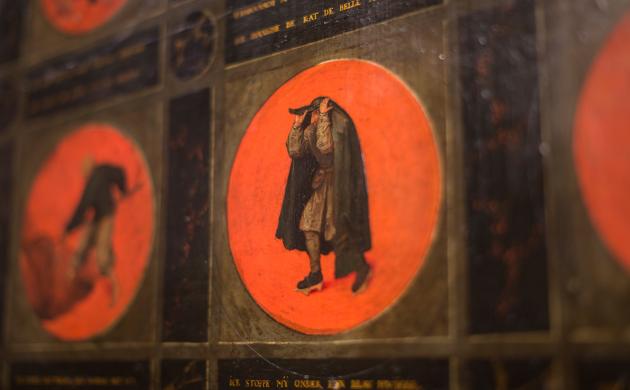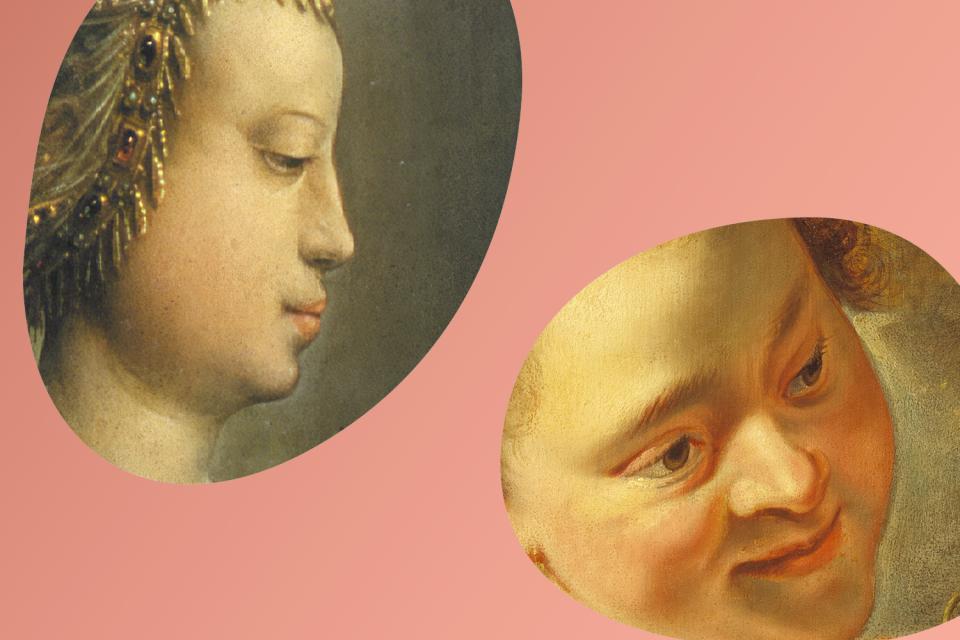At one time they were twelve separate round medallions. At an early stage, they were turned into a single panel, and a text was added. Each one was individually painted by Pieter Bruegel himself, and shows a single figure in action.

One-liners
The scenes portray proverbs and one-liners, with a dash of humour. A few examples: ‘He who would waste his effort casts roses before swine’, ‘Give me a suit of armour and I become bold enough to bell the cat’, ‘Whatever I do is in vain. I piss at the moon’, ‘My neighbour’s success annoys me. I don’t want the sun to shine on the water.’ This last saying means: ‘I begrudge someone’s good fortune.ʼ
Good advice
At the top, the Latin text explains the purpose of these scenes from everyday life: they jokingly give good advice and condemn certain forms of behaviour.
Figures
The figures seem somewhat clumsily and crudely painted, but this is a familiar Bruegel trait. The great Bruegel specialist Manfred Sellink recently pointed out that the figures in this early Bruegel work are closely comparable to those to be seen in none other than Mad Meg. These two works now hang side by side in the museum.
Specifications
- Pieter I Bruegel (ca. 1525-1569)
- Twelve Proverbs on Wooden Plates, 1558
- Oil on panel





